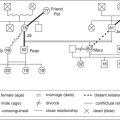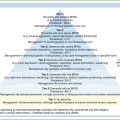Chapter 33 DRIVING
INTRODUCTION
There is much debate about older drivers. On the one hand are safety concerns for the older person and the wider public, while on the other is the impact of not being able to drive on the older person’s autonomy and freedom. In Australia, as long as one is physically and mentally fit, one can have a licence and drive. There is no age limit and only in some jurisdictions is it a mandatory requirement to undergo regular ‘fitness to drive’ tests after a certain age. Surprisingly, there is no evidence to support the effectiveness of mandatory tests and, even if a person’s licence is revoked, it does not necessarily mean that they will not continue to drive.
OLDER DRIVERS
As the population ages, so does the average age of drivers. Within the next decade, one in four drivers in Australia will be older than 65 years (Roads and Traffic Authority 2007). A question that is often asked is: Do older drivers pose a risk to other road users? Using Australian fatal crash data, a research team based at the Monash University Accident Research Centre (Langford et al 2008) established that on a per population and per licence basis, the older the driver the less the threat to other road users and those road users external to the driver’s vehicle. However, older drivers aged over 80 years do have a higher fatality rate per kilometre driven. There is some debate regarding fatalities when compared with younger age groups, as an older person is more likely to die due to their frailty.
AGE-RELATED FACTORS
Chronic illness or multiple medical conditions are common with older age and these are an identified risk for crash involvement. Many specific age-related factors for poor driving outcomes have been identified (Dubinsky et al 2000), including:
Dementia and cataracts featured among the conditions with a moderately elevated risk of crash involvement (Charlton et al 2004). A medical assessment for both of these problems would be beneficial, particularly for eye problems, as an eye specialist may be able to rectify these.
DEMENTIA AND DRIVING
According to Griffith (2007), the issue of the ability of older drivers can be restricted to certain subgroups of older people, rather than encompassing all older drivers, and, in particular, people with dementia. Dementia and other mental health problems affect judgment, reaction time and problem solving. In 2005, Snellgrove estimated that around 162,500 older people with cognitive impairment associated with dementia were driving on Australian roads and that 107,250 road accidents were attributable to these drivers. In the same study, Snellgrove had 115 older drivers with mild cognitive impairment or early dementia complete the Maze Task (Ott et al 2003) and an on-road driving test. The results were not in favour of older people with mild cognitive impairment or early dementia continuing to hold licences to drive. It was found that 70% of the participants failed the on-road test, most broke an important road law, and the driving assessor had to physically intervene in nearly half of the cases in order to prevent an accident. The driving deficits were identified as poor planning, poor observation skills regarding other vehicles, signs and signals, an inability to monitor and control the speed of the car, poor positioning of the car, confusion regarding the pedals and gears, and a lack of anticipatory or defensive driving. Most of the study participants did not think anything was wrong with their driving.
This stance is not fully supported though. For example, Alzheimer’s Australia (2004), in its Driving Policy Statement, acknowledge that at some stage people with dementia will have to give up driving, but to take this away upon diagnosis would discourage some people from seeking early diagnosis and treatment. There is also other evidence that older people with dementia for the most part will themselves limit or cease their driving, or are amenable to suggestion from a relative or healthcare worker (Foley et al 2000). There are no straightforward solutions to this problem, with a number of important factors to be considered before any decision is made.
Stay updated, free articles. Join our Telegram channel

Full access? Get Clinical Tree





